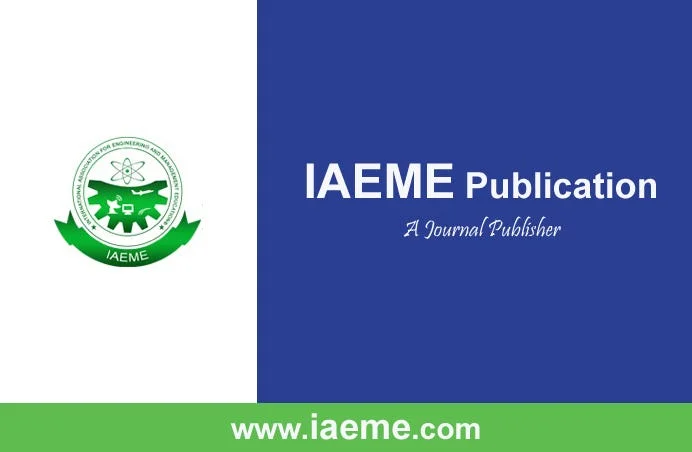Eshetu Gusare Publication: Eshetu Gusare Desisa (often cited as Eshetu Gusare) is an academic researcher and lecturer whose works span artificial intelligence, graph anomaly detection, health informatics, and wireless networks. His publications, while still emerging, contribute to growing scholarship in AI, machine learning, and applied computing. This article maps his research profile, thematic foci, publication venues, strengths & challenges, and the likely future trajectory of his work.
Who Is Eshetu Gusare (Desisa)? Academic Profile & Affiliations
From public records and professional profiles, here’s what we know:
- On Google Scholar, Eshetu Gusare Desisa is listed as a Dr. of Computer Science and Technology at Xidian University, China.
- On LinkedIn, he identifies as a Senior Lecturer at Assosa University (Ethiopia) and mentions pursuing his PhD at Xidian University with a research focus in Attributed Graphs Data Analysis and Anomaly Detection.
- The IAEME author database lists Eshetu Gusare Desisa as affiliated with Assosa University, Assosa, Ethiopia, and credits him as co-author on topics including deep learning in health informatics.
- His publications appear in several peer-reviewed journals and conference proceedings, often in collaboration with other researchers such as Shaik Janbhasha and Narasimharao Pentela.
Thus, Eshetu Gusare is not a “publisher” in the sense of a press, but rather an author / researcher whose body of work constitutes his “publications.” This article will treat his oeuvre as the “Eshetu Gusare publication record.”
Major Topics & Thematic Focus in His Research
By surveying his published works, we can detect recurring themes and research directions in Eshetu Gusare’s scholarship.
1. Graph-based Anomaly Detection & AI in Networks
One of his prominent contributions is in the area of graph knowledge-based anomaly detection, especially in attributed graphs (graphs where nodes carry additional features). For instance, his work is co-author on the paper “Identification of Generative Adversarial Network Forms, Open Issues, and Future Study Areas”.
His interest in graph theory and AI helps address structural anomalies in networks — useful in cybersecurity, fraud detection, social network analysis, etc.
2. Health Informatics & Deep Learning
Another significant publication is “Challenges of Deep Learning in Health Informatics”, co-authored by Shaik Janbhasha, Eshetu Gusare Desisa, and Narasimharao Pentela. This paper surveys technical and domain challenges when applying deep learning models to medical and clinical data, such as interpretability, data heterogeneity, temporal dynamics, and model validation.
This shows a cross-disciplinary orientation: combining computer science methods with real-world applications in healthcare.
3. Wireless Networks & Signal Processing
Gusare has also co-authored a paper titled “High Rate Direct Sequence Spread Spectrum (HR/DSSS) in Wireless Mesh Networks for High Data Rate Transmission”. Although this paper is not exclusively under his name, his involvement indicates an interest in wireless communication techniques, network throughput optimization, and the underlying signal processing.
4. Neural Network Standards & Learning Theory
Another recorded work is “Identifying Learning Standards of Artificial Neural Networks: A Study”, authored with S. Janbhasha and G.A. Meru. This suggests that Gusare is concerned not only with applications but also with the methodological foundations of machine learning—evaluating how neural nets should be trained, validated, and standardized.
Taken together, his research portfolio spans algorithms, network theory, health AI, and foundational ML.
Publication Venues, Indexing & Academic Reach
Knowing where his works appear gives insight into their visibility, peer review, and scholarly reach.
Journals & Conference Proceedings
- Challenges of Deep Learning in Health Informatics is published in IJARET (International Journal of Advanced Research in Engineering and Technology), Volume 12, Issue 2, February 2021.
- Identification of Generative Adversarial Network Forms appears in ICT Analysis and Applications (a Springer volume) as part of proceedings.
- His work shows up in IAEME author listings, which suggests submissions to journals aggregated there.
Indexing & Citation Metrics
- On Google Scholar, his profile shows a small number of citations (as of now) and an h-index of 1.
- Some of his works are co-indexed with other authors (e.g. Janbhasha) and sometimes merged in citation counts.
- He is listed in IAEME’s author database with multiple included publications.
Strength & Limitations of Reach
- His publications are relatively new and in niche or regional journals, meaning global recognition is still emerging.
- Because some journals (e.g. IJARET) are not among the highest-impact ones in AI or medicine, the influence might be moderate initially.
- Co-authoring with active researchers in other regions helps exposure across networks.
Thus, Eshetu Gusare’s publication record is growing, and its academic reach is moderate but with potential to expand.
Strengths, Challenges & Gaps in His Publication Record
No academic profile is perfect. Here’s an assessment of what seems strong, what’s challenging, and where gaps exist in Gusare’s publication record.
Strengths
- Interdisciplinary reach: Gusare publishes across AI theory, health informatics, and network systems, showing versatility.
- Collaborative work: Working with multiple co-authors broadens exposure and diversifies topics.
- Timely relevance: His work on AI and health is highly topical in global research trends.
- Emergent voice: As a researcher from Ethiopia (Assosa University), his contributions help diversify the global research ecosystem.
Challenges / Weaknesses
- Low citation counts: With an h-index of 1, many of his works have yet to be widely cited.
- Publication venue selection: Some journals are regional or less prominent, which can limit visibility.
- Consistency & volume: The number of publications is still modest; sustained output is needed to build a robust scholarly identity.
- Access & visibility: If his works are not open-access or widely indexed, many potential readers might not reach them.
Gaps & Opportunities
- Original dataset / case studies: More empirical or domain-specific case studies (e.g. on Ethiopian health systems) would strengthen the applied relevance.
- Books / monographs: No known book-length work is attributed to him; moving into longer, systematic academic publishing would boost authority.
- High-impact journals / conferences: Publishing in top-tier AI/medicine venues would accelerate influence.
- Open access & data sharing: Making code, data, and preprints available would help dissemination and reproducibility.
If Gusare continues publishing and addressing these gaps, his academic brand could grow significantly.
Impact, Relevance & Future Directions
To understand what role Eshetu Gusare’s publications can play, we should reflect on their impact and likely future pathways.
Current Impact & Relevance
- His paper on deep learning challenges in health informatics contributes to a growing conversation about applying AI in sensitive domains. Such surveys help guide more rigorous future research.
- The graph anomaly detection research places him in a niche but important subfield, useful for fraud detection, cybersecurity, and network analysis.
- As an emerging African researcher, his work adds geographical and scholarly diversity to the AI and health informatics landscape.
Likely Future Trajectories
- Further development in graph AI & anomaly detection
He may pursue more advanced methods (graph neural networks, explainable AI) in detecting anomalies in social or network data. - Applied AI in healthcare systems of Africa
Given his regional affiliation, future work could explore AI in Ethiopian / African medical systems, helping bridge global tech with local needs. - Interdisciplinary combinations
Combining wireless network research with AI for telemedicine, remote health monitoring, or IoT in healthcare could be a strong niche. - Publishing more in high-impact venues
He may aim for journals such as IEEE Transactions on Neural Networks, Nature Digital Medicine, or ACM KDD. - Supervisions, mentorship & curriculum building
As a lecturer, he may lead students toward new publications, build AI curricula in his institution, or engage in academic leadership.








